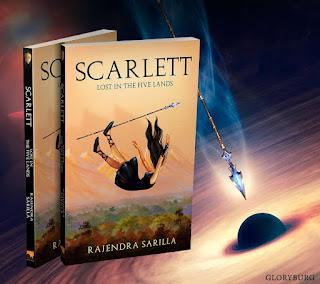Challenges for fantasy literature in India.
The literary landscape in India is rich and diverse, with a multitude of genres finding a place on bookshelves across the country. While Indian literature boasts a strong tradition of mythology and folklore, the fantasy genre, characterized by imaginative worlds, magical elements, and fantastical creatures, has faced challenges in gaining widespread readership. This apparent reluctance to embrace fantasy literature raises questions about the preferences and cultural nuances that influence reading habits in India. In this exploration, let us delve into potential reasons behind the perceived lack of interest in fantasy books.
Cultural Roots and Traditional Narratives:
One key factor influencing reading preferences in India is the deep-rooted connection to traditional narratives and mythology. Indian literature has a rich heritage of epics like the Ramayana and Mahabharata, which are deeply ingrained in the cultural fabric. These epic tales, replete with gods, goddesses, and magical elements, form the foundation of many Indian narratives. As a result, readers often find comfort and familiarity in stories that draw upon these established mythological traditions, potentially overshadowing interest in entirely new and invented fantasy worlds.
Moreover, the oral storytelling tradition in India passed down through generations, often revolves around moralistic tales, legends, and fables. These narratives, designed to impart wisdom and lessons, may differ in tone and purpose from the escapist and immersive nature of fantasy literature. The preference for stories that carry moral or ethical undertones could contribute to the limited popularity of the fantasy genre.
Educational System and Reading Culture:
The education system in India plays a crucial role in shaping reading habits. With a curriculum that heavily emphasizes academic texts, there might be a tendency for readers to gravitate toward more pragmatic and knowledge-oriented literature. Fantasy, often perceived as a form of escapism, might struggle to find a place within the educational framework, limiting its exposure to potential readers.
Furthermore, the emphasis on competitive exams and career-focused education might contribute to a culture where leisure reading takes a backseat. In such an environment, genres that are perceived as more serious or academically enriching may dominate the literary landscape, leaving fantasy on the fringes.
Market Dynamics and Publishing Trends:
The publishing industry also plays a crucial role in determining which genres thrive in the market. While there has been a growing interest in diverse genres in recent years, including fantasy, the industry's historical focus on certain genres might influence reader expectations and choices. If publishers are hesitant to invest in promoting and marketing fantasy novels, it can limit the visibility of these books, making it challenging for them to gain traction.
Moreover, the dominance of bestsellers and commercial fiction in the market could overshadow niche genres like fantasy. Readers may be more inclined to pick up books that align with popular trends rather than exploring lesser-known genres, creating a challenge for fantasy authors to establish a foothold in the market.
Changing Trends and Emerging Opportunities:
Despite the challenges, there are signs of a changing literary landscape in India. The success of Indian authors like Amish Tripathi, who blends mythology with fantasy elements in his Shiva Trilogy, demonstrates a growing appetite for imaginative storytelling. Authors who can bridge the gap between traditional Indian narratives and fantasy worlds have the potential to capture a wider audience.
Additionally, the popularity of international fantasy franchises like Harry Potter and Game of Thrones has introduced Indian readers to the allure of fantastical realms. As global pop culture influences Indian tastes, there is an opportunity for local authors to create worlds that resonate with the cultural sensibilities of Indian readers while embracing the fantastical elements that make the genre appealing.
Online Platforms and Self-Publishing:
The rise of digital platforms and self-publishing has democratized the publishing process, providing fantasy authors in India with alternative avenues to reach readers. Authors can leverage online platforms to showcase their work, build a fan base, and gain recognition outside the traditional publishing model. This democratization of publishing opens doors for diverse voices and genres, including fantasy, to find their niche audience.
Conclusion:
While the fantasy genre may face challenges in gaining widespread acceptance in India, there is hope on the horizon. Cultural roots, educational dynamics, and market trends contribute to the current scenario, but changing reader preferences, emerging opportunities, and the evolving publishing landscape offer optimism for fantasy authors. As Indian readers continue to diversify their literary choices and explore new horizons, the fantasy genre has the potential to carve out its space in the vibrant tapestry of Indian literature. With innovative storytelling that bridges cultural traditions and fantastical realms, fantasy authors can captivate readers and contribute to the evolving narrative of literature in India.




Comments
Post a Comment